CASE STUDY
Man and Machine in Perfect Harmony: HANK Exoskeleton and AM Improve Patient Outcomes During Gait Rehabilitation
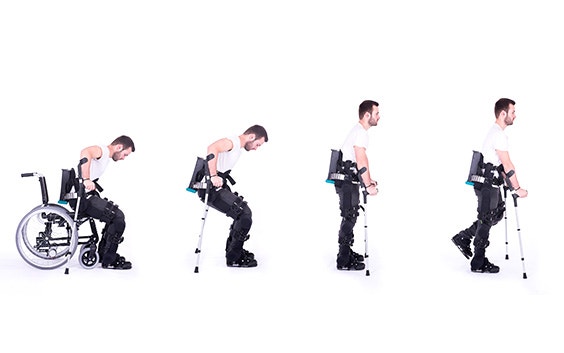
Rehab is often a grueling process with a few bumps along the way. Plus, each patient’s road to recovery is unique. HANK, a lower-limb exoskeleton by GOGOA that uses 3D-printed parts, is a complementary solution that provides a constant gait pattern for patients — dramatically speeding up traditional rehabilitation times and improving patient outcomes.
The challenge
Create a personalized exoskeleton quickly to help patients with gait rehabilitation
What do you think of when you hear “exoskeleton?” Often, the word conjures up images of heroes and enhanced strength — with exoskeletons appearing in blockbusters like Avatar and Aliens. However, exoskeletons are making a real-life impact in medical applications, where the goal is to rehabilitate patients. This is where HANK excels.
“HANK is a play on the word HANKA, or “leg” in the Basque language: an appropriate name as it’s designed to give patients an additional push on their road to recovery,” says Carlos Fernández, CEO and Founding Partner of GOGOA. “It also shares a name with a pint-sized scientist and inventor,” he smiles.
HANK supports patients recovering from spinal cord injuries, neurodegenerative diseases, or cerebrovascular accidents (i.e., strokes) by assisting them in learning how to walk again.
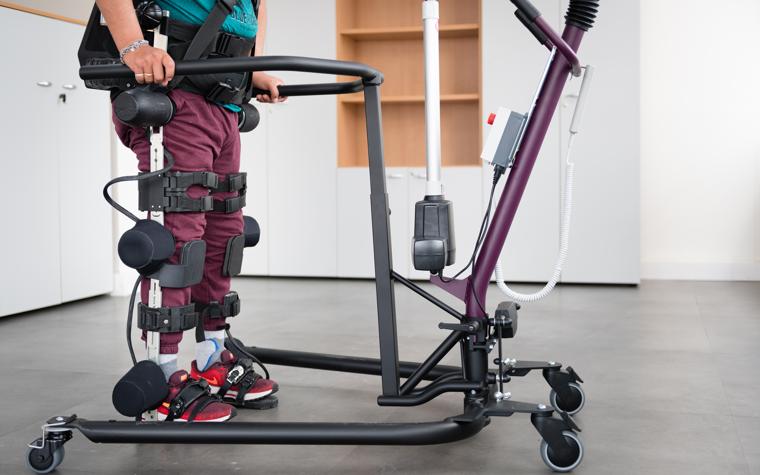

The exoskeleton encourages neuroplasticity, an ability that allows the brain to change over time. It also stimulates motor neuron reprogramming, a process where the patient’s muscles and neural pathway are gradually reprogrammed to activate with lower or distorted electrical signals sent from the brain to the affected areas in the body. These two factors, as well as being customized for each patient, enable users to gradually gain mobility in their lower limbs based on repetition and slight adjustments to an individual’s gait pattern. As a result, this specialized equipment drastically cuts down recovery time. However, this groundbreaking exoskeleton would’ve struggled to keep stride with GOGOA’s ambitions without utilizing additive manufacturing (AM) and rapid prototyping.
The solution
Flexible AM-inspired exoskeleton made from PA 12 using MJF technology
GOGOA was introduced to 3D printing when the team attended a 2-week program for startups organized by HP. After the event, HP recommended Materialise. “At Materialise, we found the right fit regarding the material and finish. Other 3D printing companies we tried for our prototypes couldn't reach the level of flexibility and the quality of finishing we desired,” says Carlos.
What is unique about HANK is that almost all of its exterior components and elements inside the battery pack use 3D-printed parts. “We used PA 12 and Multi Jet Fusion (MJF) technology. This material is flexible, and due to rapid prototyping, 3D printing is a fast, efficient, and economical way to iterate on our design — especially compared to injection molding,” explains Carlos.
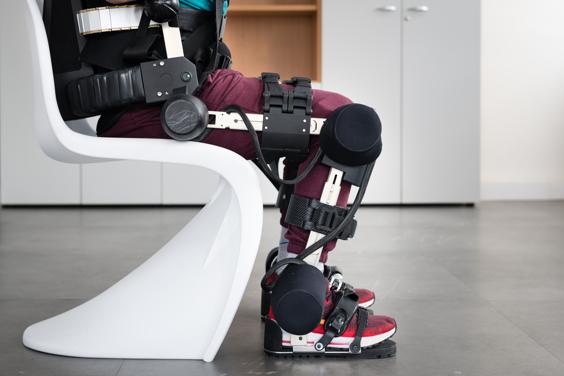
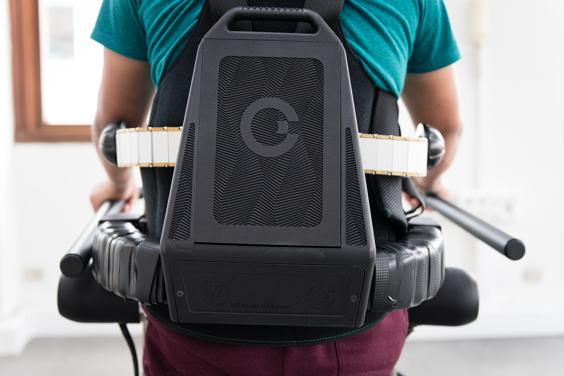
With rapid prototyping, the GOGOA team created personalized plastic 3D-printed parts that integrated with metallic components in the exoskeleton in a matter of weeks: a feat that’s great for their production cycle. “We could fulfill most of the prototyping steps and see the different technologies on the Materialise website without any trouble. And this led to a smoother manufacturing process with AM overall. Although any doubts or questions we did have were answered swiftly by the manufacturing support team,” says Galder Arego, Business and Brand Strategist at GOGOA.
“We’re really impressed with the customer and technical support: the design experts gave us a few tips on optimizing our designs and assisted us with the paperwork for the ISO13485 certification. As we’re the first European exoskeleton company that’s CE-certified, having a local supplier familiar with the regulation around producing such specialized medical equipment is a real benefit.” Certification provides GOGOA with new business opportunities in different markets. Another advantage is the option for them to fulfill a two-pronged strategy of using HANK in their MOVEX CLINICS and other medical facilities worldwide.
The result
A custom lightweight exoskeleton that perfectly integrates with a patient’s gait pattern
GOGOA has a range of exoskeletons for industrial and recreational activities like skiing that use our 3D-printed parts; however, HANK was built with additive in mind. “We modeled the design in 3D and created the prototypes using AM, trying different molds and redesigns to perfect the skeleton. 3D printing is great for prototyping and small series manufacturing: if we tried the same process with injection molding, it simply wouldn’t have worked,” states Galder.
GOGOA used our manufacturing capabilities to produce approximately 15 customized 3D-printed parts for HANK, including components for the backpack, support for the braces — around the foot, ankle, and thigh — and the connectors.
“At Materialise, we found the right fit regarding the material and finish. Other 3D printing companies we tried for our prototypes couldn't reach the level of flexibility and the quality of finishing we desired.”
— Carlos Fernández, CEO and Founding Partner of GOGOA
The team was able to choose from various materials with different mechanical characteristics, which ultimately sped up the design and manufacturing process. “There’s a misconception that 3D printing is limited, with only a few materials and solutions, but that’s not the case. Materialise has an array of materials, solutions, and finishes cataloged on the website, so you can discover the right option for your particular design.”
In fact, the company’s view of 3D printing evolved along with our partnership. GOGOA has continued experimenting with even more AM materials to refine HANK and develop a new version: HANK+.

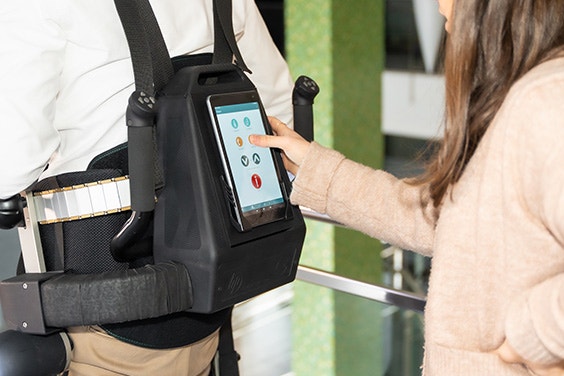
“HANK+ uses the same basic framework and 3D-printed parts — like the grips, connectors, and backpack holds — that HANK uses. Yet we managed to streamline the design, add some external lights to help patients navigate darker environments, and even make it more aesthetically appealing,” says Carlos. Summer 2023 is the release date for this next-generation exoskeleton, but patients are already benefitting from its older brother.
“HANK is an exoskeleton that truly integrates perfectly with the patient — transferring just the right forces and gait pattern to the user. Other exoskeletons are not as accurate at transferring this information. With 3D printing, we achieved a product that significantly affects patient recovery times and positive outcomes. HANK is the lightest, most advanced, lower-limb exoskeleton on the market and the only one in the world with six motorized joints and an adaptive gait pattern. It's the best way to rehabilitate patients. Our revolutionary technology goes beyond traditional methods — allowing us to achieve more satisfactory results. Now, patients with various disabilities can quickly regain their autonomy and improve their quality of life. For me, that’s genuinely satisfying,” says Carlos.
So, the next time you see a hulking exoskeleton on the big screen, think of HANK: a relatively small piece of rehab equipment making a big impact on patients suffering from different pathologies.
Share on:
This case study in a few words
Medtech
- PA12
- Multi Jet Fusion
- Rapid prototyping and design iteration
- Flexible, lightweight material with excellent finishing properties
- Custom small series production
